► Distinctive design
► Tardis interior
► Zingy performance
Ask any prospective EV buyers what’s holding them back from the switch to ICE and invariably the first answer will be price. And they’d be right. If they fit in with your driving requirements, then there are plenty of EVs that are engaging, dynamic and versatile – so long as you have very deep pockets. Hunt below the £25k mark for a mainstream family hatch, and your pickings can be counted on one hand.
Hyundai is aiming to change that with the front-drive Inster, combining funky and chunky design, Tardis-levels of space, innovative cabin architecture, a 186-mile WLTP range, and oodles of safety and infotainment kit, all for an estimated £22,500. Estimated because the Inster only arrives here in January 2025, and prices and specification have yet to be finalised. Which was why we jumped at the chance of an early drive on the Inster’s home turf in Seoul and to see if this really is too good to be true.
At a glance
Pros: Attractive price, bold design, incredibly spacious interior, decent range
Cons: Only four seats, soft brake pedal, occasionally crashy ride
What’s new?
Somewhat confusingly, it’s badged as a Casper in Korea, where the Casper has been around since 2021 with petrol power. Built at Hyundai’s Gwangju plant, Casper is one of Korea’s Gyeongcha ‘light cars’ with a length and width less than 3,600mm and 1,600mm that qualifies it for tax incentives and attractive parking rates.
It sits on Hyundai’s K1 platform, as opposed to the bespoke E-GMP Electric Global Modular Platform electric that underpins its IONIQ cars. The UK-bound Inster will be electric only, and is longer with an extended wheelbase to boost cabin space.
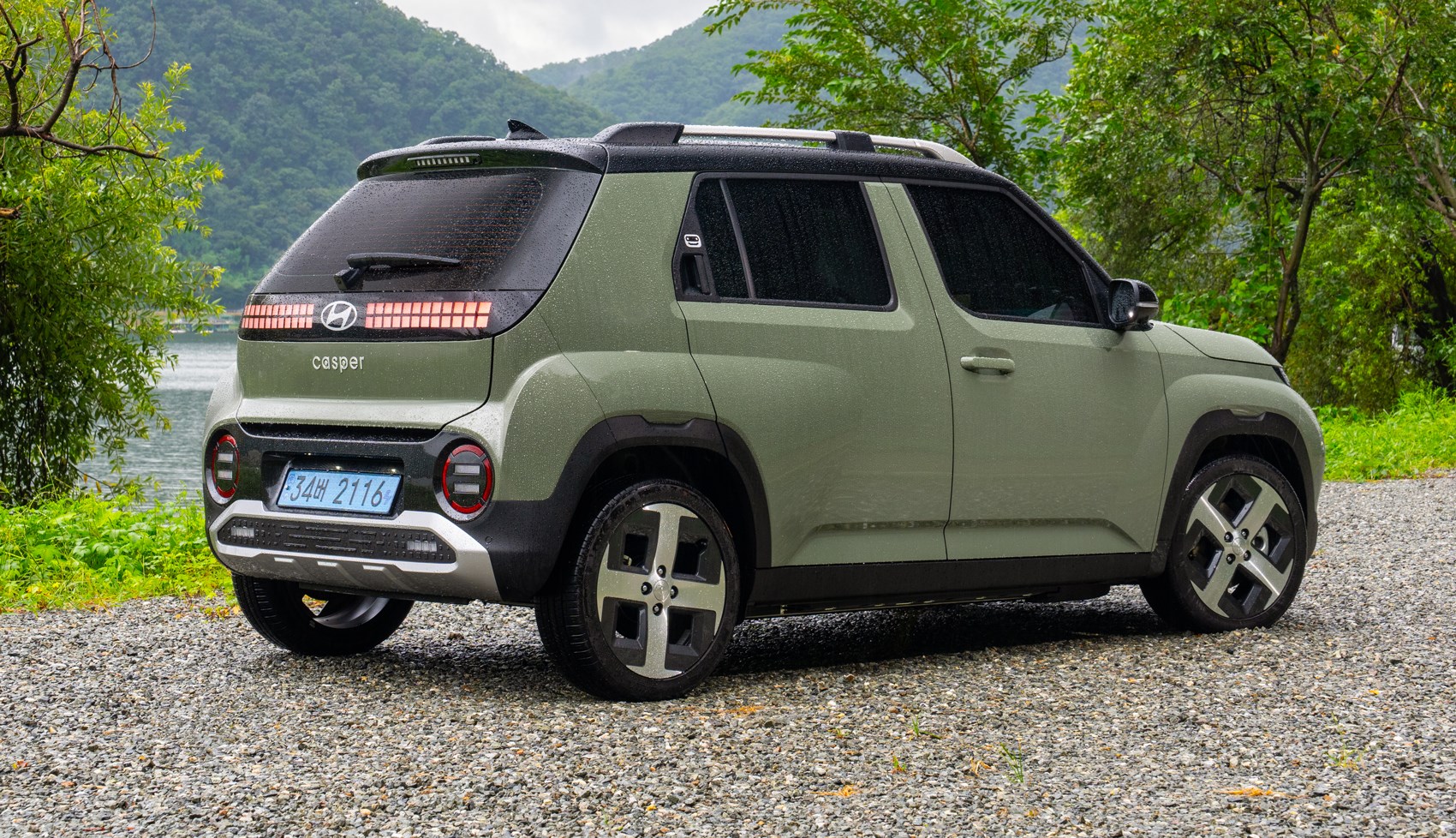
It’s Marmitey to look at – that’s for sure – but, to our eyes the Casper’s proportions, detailing and stance successfully work together. It’s a car that’s truly different yet instantly recognisable as a Hyundai. For a compact package there’s a lot to take in. The flared plastic-clad wheel arches, clamshell bonnet, and roof bars give it a bit of off-roadery visual bicep, while the peering round front and rear light units add a dash of anthropomorphic character. Tiled front and rear indicators create a strong visual link with the rest of the IONIQ range. It’s bold and distinctive, but then what do you expect from a company that’s on a serious design roll with the new IONIQ 5 and 6, Santa Fe and Kona.
What are the specs?
Headline news is the estimated £22,500 price point. That will be for the range-starter Inster, with a 42kWh battery powering a single electric engine that’s dishes up 95bhp and 108lb ft for a 0-62mph dash in 11.7 seconds and an 87mph top speed. Range comes in at 186miles according to WLTP.
There will also be a high-spec model with a ‘Long Range’ 49kWh battery with a 221-mile WLTP range. Power climbs to 113bhp, the sprint time to 62mph drops to 10.6 seconds and top speed nudges 93mph. Both versions feature 400-volt recharging architecture with a 120kW charge rate, are fitted with a heat pump as standard – nicely done Hyundai – and are vehicle-to-load compatible. No final word on specification and equipment levels, but given what we know from Hyundai, expect the Inster to be generously kitted out with safety, connectivity and infotainment features.
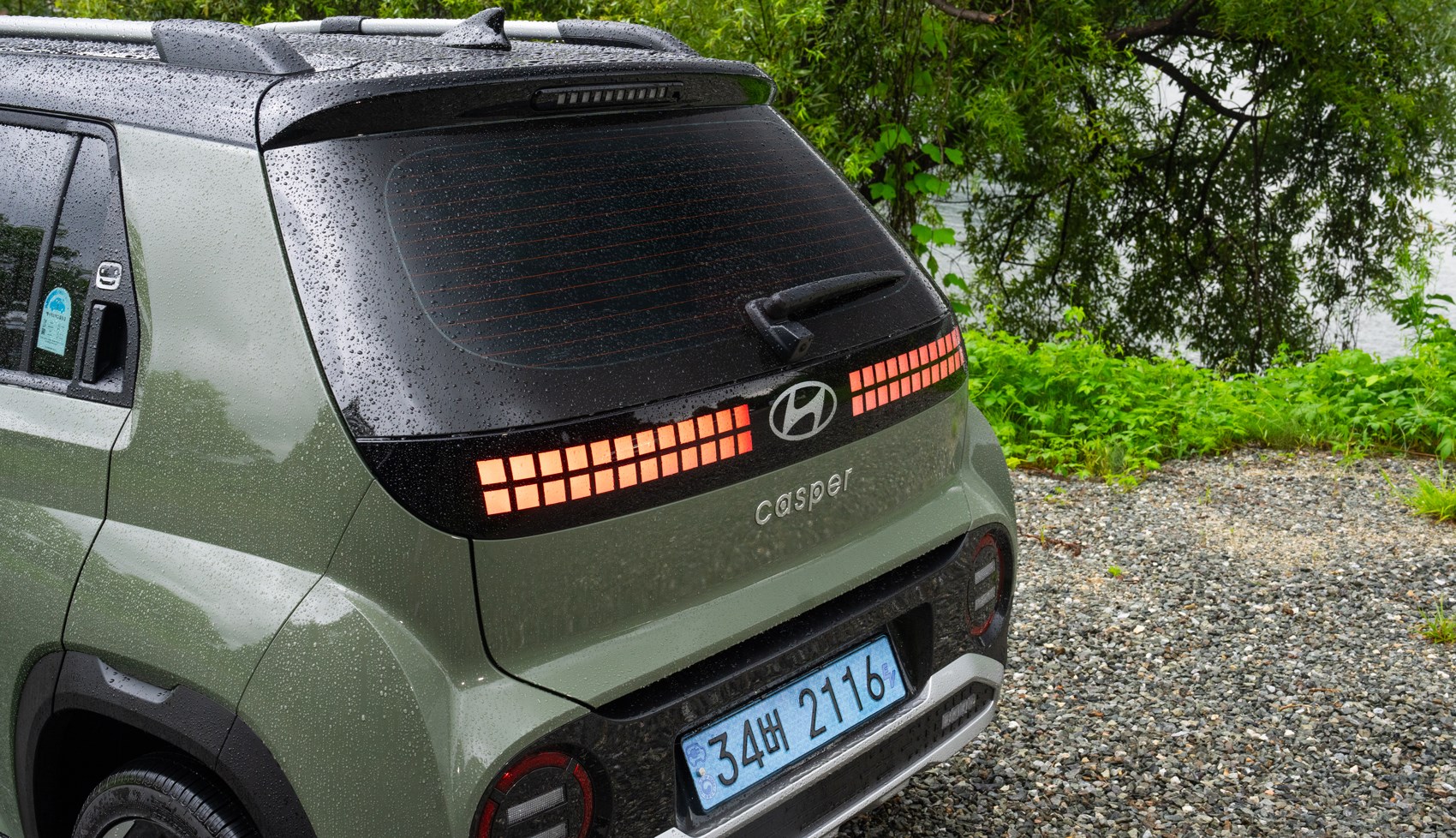
It’s a dinky 2835mm long – 230mm longer than the petrol-powered Casper – and its wheelbase is 2580mm – an extra 180mm over the Casper’s 2,400mm wheelbase. The Inster is also a nominal 15mm wider than its ICE relative. And the name change? Hyundai Europe shied away from the Casper name – browse any urban dictionary and you’ll understand why – and opted for the Inster moniker.
What’s it like to drive?
It only takes an hour negotiating Seoul’s twenty-four-seven rush-hour traffic to appreciate that the Inster’s urban driving credentials are top-drawer. We drove the 95bhp/42kWh battery version, and despite the quoted 11.7 second jog to 62mph, the Inster felt zippy and alert, snapping ahead from standstill with an addictive verve, and feeling perky through to 50mph – plenty of pace for town work.
Hyundai hasn’t released any data on weights, but we wouldn’t be surprised if the Inster weighed in at 1,350kg, and you can feel the benefits of that relatively low weight on the move. The adjustable regen set-up is ideal for one-pedal driving, and while the brakes are up to the job, a little more initial bite would be welcome.
Quick and direct steering works with a low centre of gravity and decent body control so you can exploit that zesty performance, allowing you to make quick and decisive changes in direction without wallowing and flailing about. Excellent visibility and tiny overhangs further add to the Inster’s urban armoury. What might be considered too small a gap in traffic for an IONIQ 5 would feel supermarket carpark-sized in the Inster.
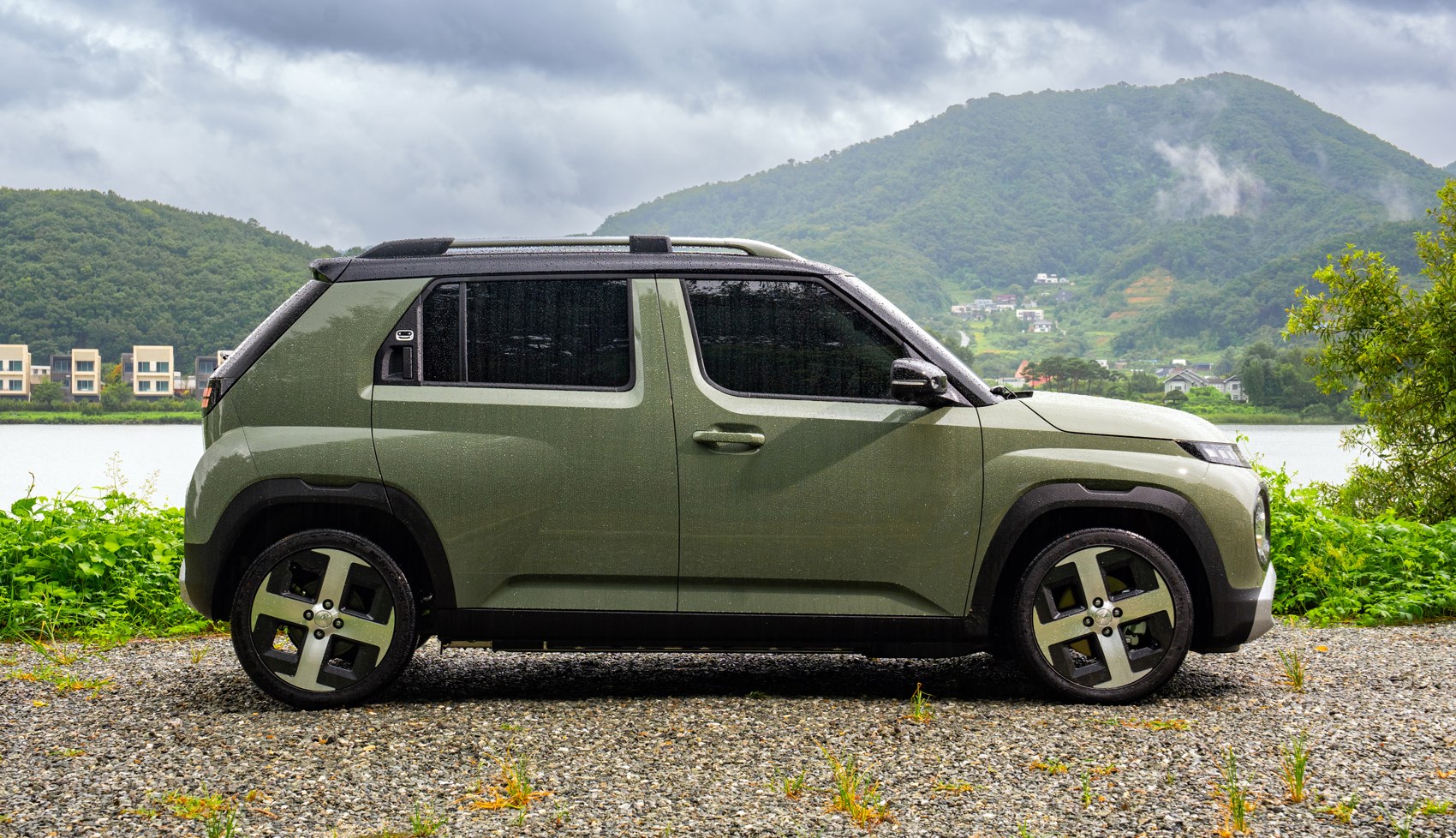
You can play around with the drive modes, if you’re so inclined. Eco is the killjoy setting, maximising range over fun. The Sport option adds weight to the steering and sharpens up the throttle response. Snow meters out the torque like a miser so you don’t get stuck in the slush. And Normal is, well, normal.
For the most part the Hyundai rides with a well-judged compliance, the Macpherson strut front and torsion beam rear setup keeping unwanted body movements in check while still providing a good level of compliance – vital when urban roads tend to be collections of dips, potholes and ridges held together with scrappy bits of tarmac. But dealing with larger intrusions occasionally flummoxed the suspension crashing into rather than smoothing over these intrusions, and quickly coming up against its bump stops. Nothing a little finessing of the spring and damper rates wouldn’t sort out.
What’s the interior like?
Swing open the doors and you’re greeted by a vast cabin that’s loaded with clever touches and smart features. And when we say vast, we mean it. It may sit on the first rung of Hyundai’s electric ladder, but the Inster offers its driver and three passengers almost limousine-like levels of lounging room. The front seats work together to create a bench, like a 1963 Ford Galaxie.
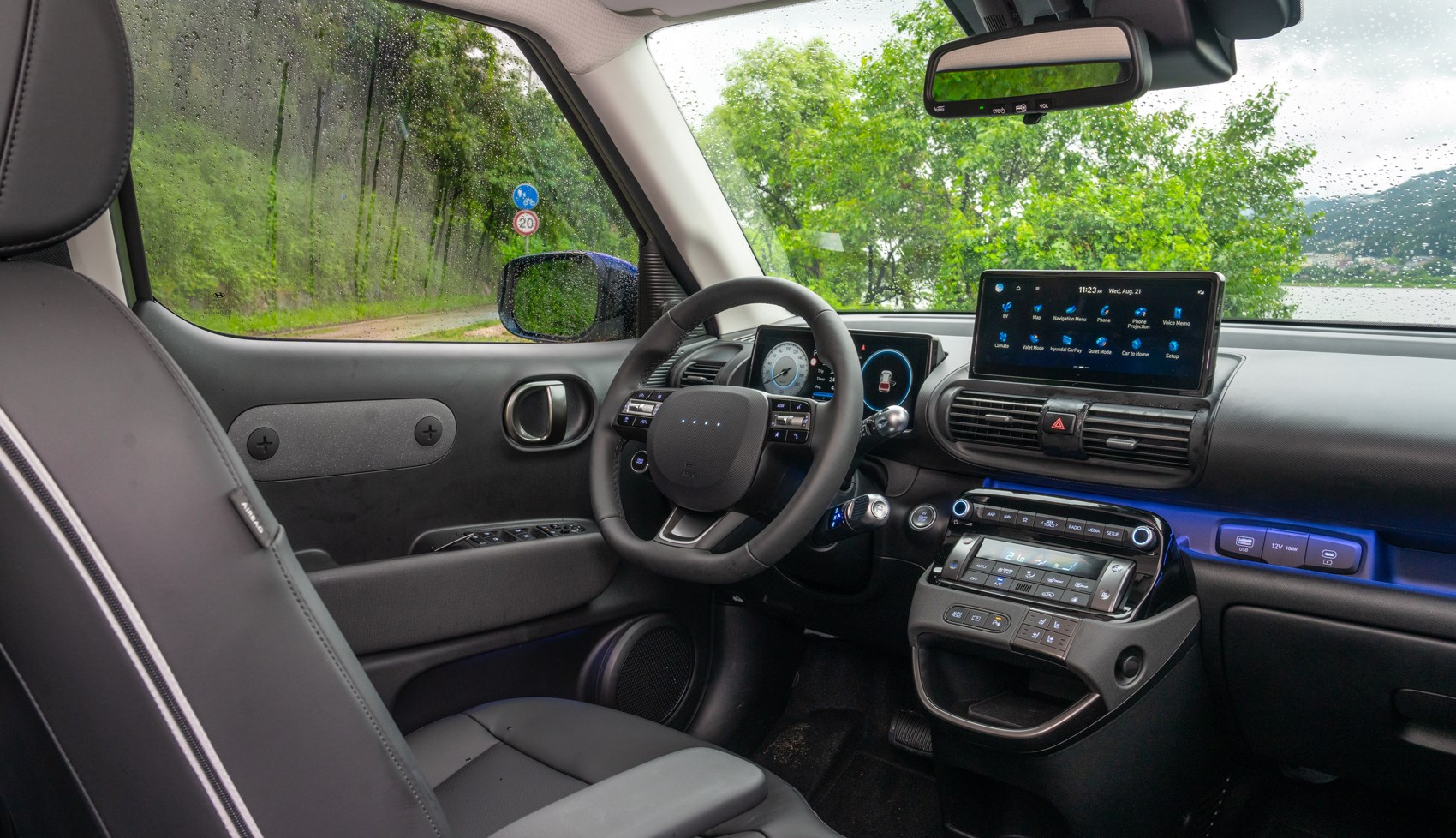
The two 50:50 split rear seats individually slide back and forth to boost either legroom or luggage space from 280 to 351 litres. That climbs to 1,059 litres when the rear seats are folded down, if you need an impromptu Airbnb, all four seats fold flat. No frunk, though.
The front and rear floors are also flat, further enhancing the sense of space. The compact centre console (shotgunned with lovely physical buttons – whoop!) contains a wireless phone charging compartment, and additional phones, power bars and other devices can be stashed on the that illuminated shelf. Not sure about interchangeable Tonka-toy plastics filets on the door cards – there’s cool and quirky, and they’re neither.
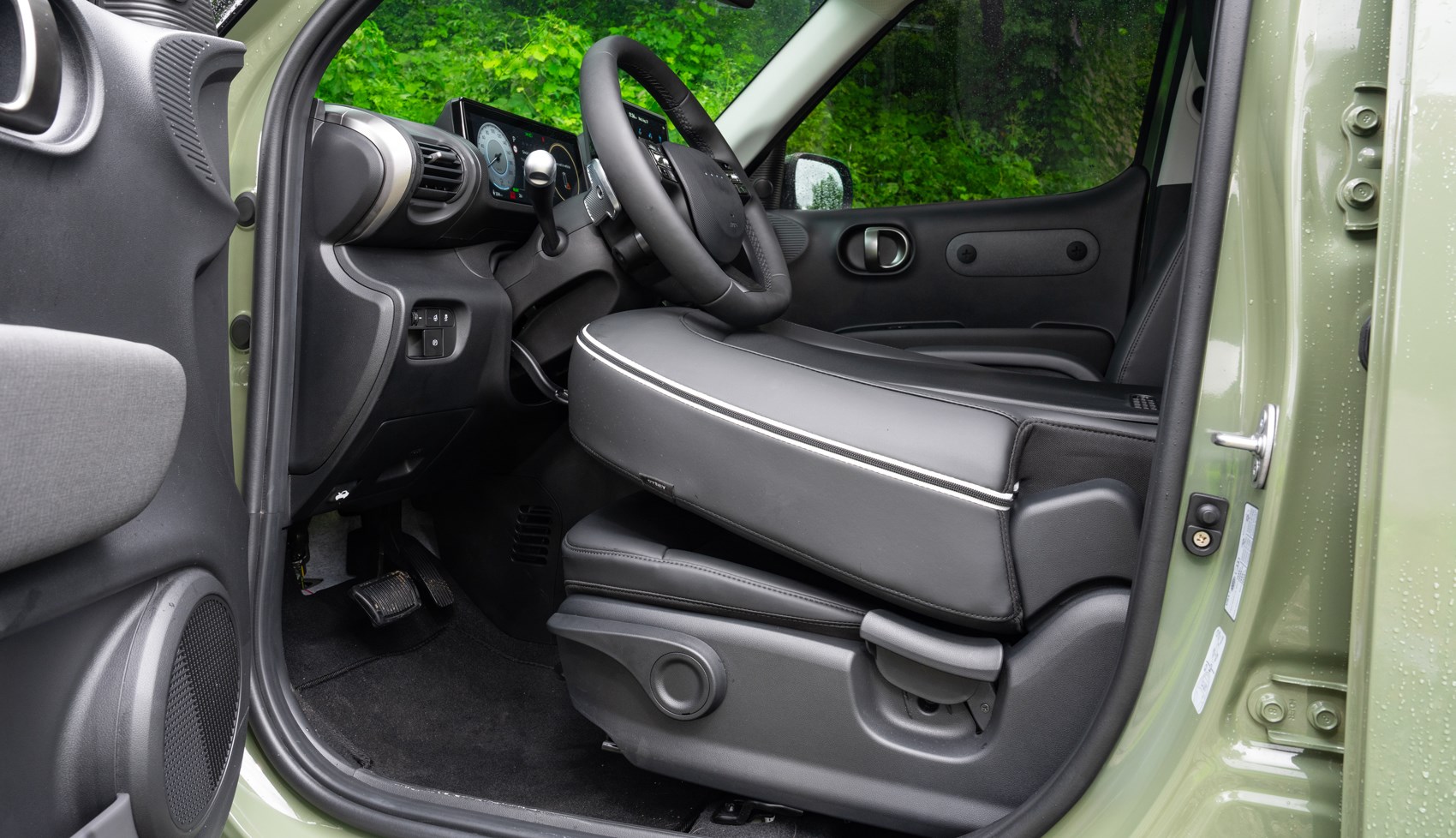
Some of the plastics, many of them containing recycled components, are hard and flat, but key touch points all feature a range of tactile finishes and fabrics – we were particularly taken with the cream and brown houndstooth upholstery. It’s a cabin that works well on a number of levels – it’s intelligently configured, packed with interesting features and ideas, and it’s genuinely roomy. It’s built to a budget, no doubt, but it’s also been built with plenty of imagination and personality.
Before you buy
When it arrives in October, the Dacia Spring will cost just £14,995 – incredibly good value for a brand new small hatchback, let alone one powered by electricity. Even if you push out the boat and go the top-dog £16,995 model with more grunt and equipment, you’ll only need a few minutes behind the wheel to realise why the Inster is £5.5k dearer – it’s far better equipped, bigger inside, charges faster, goes further and is positively racy compared to the sluggish Spring.
We’re not kicking the Spring – we’re hugely impressed with Dacia’s laser focus on value – but a quick back-to-back drive will quickly illustrate the difference between cost and value. The more expensive Fiat 500e? Pffft… try driving four-up and see which gives out sooner – your rear passengers or the 24kWh battery. No, the Inster’s biggest rival will be Citroen’s rather excellent e-C3, with its well judged combination of value, comfort, range and style.
Verdict: Hyundai Inster
Hyundai has hit the bullseye here with a cool Dikec-like accuracy. For a compact urban runabout, the Inster is big where it counts – big on character and charm, big on clever and flexible packaging, and big on range and performance. There are some grumbles – not everyone will be as taken with the Hyundai’s design as we were, there will always be a toss-up between rear passengers and luggage space, and a little more body control would be welcome. But if you’re looking for an affordable and stylish runabout that doesn’t feel compromised in every area, then the Inster should be at the top of your must-drive list.